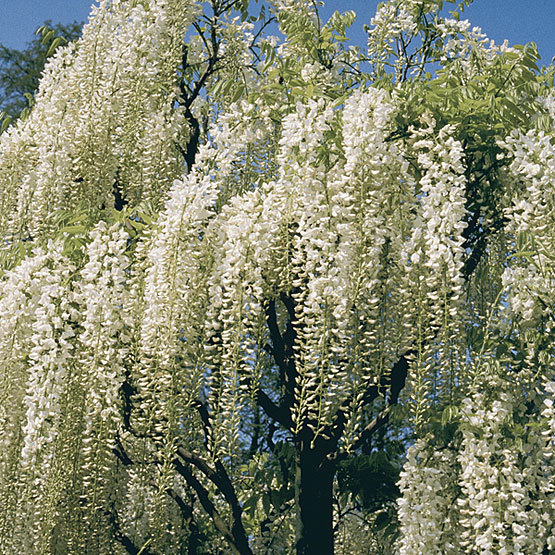
The genus Wisteria is comprised of ten species of deciduous climbers found in moist woods and along streambanks in China, Korea, Japan, and the U.S. Chinese wisteria ( W. chinensis or W. sinensis ) is a familiar garden vine, but it can be invasive in some areas. American wisteria, W. frutescens , is native to the central and southern U.S. and has unscented blue flowers that emerge after the leaves. Flowers of all wisteria are showy and pea-like; they are borne in racemes in spring or summer. Wisteria can be trained against a wall, into a large tree, over an arch or pergola, or as a standard. Be sure supports are very sturdy, as vines can grow to 30 feet.
Noteworthy CharacteristicsShowy, pendent, fragrant flowers and bean-like seed pods. All parts may cause severe discomfort if ingested.
CareWisteria need fertile, moist but well-drained soil in full sun or partial shade.
PropagationIn early to midsummer, take basal cuttings from side shoots and root with bottom heat. Wisteria can also be layered in autumn or grafted in winter.
ProblemsDieback, crown gall, leaf spots, viruses, Japanese beetles, aphids, leaf miners, scale insects, and mealybugs.





















